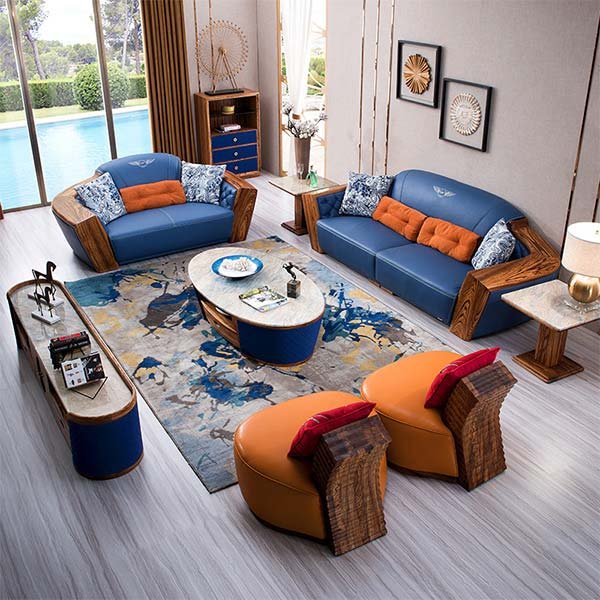“Stay ahead of the curve with innovative designs and superior comfort in the Sofa 2025 Market.”
Utilizing Advanced Technology in Sofa Manufacturing
The sofa market is constantly evolving, with new trends and technologies shaping the way manufacturers design and produce their products. In order to stay ahead in this competitive industry, it is crucial for companies to embrace advanced technology in sofa manufacturing. By incorporating cutting-edge tools and techniques into their production processes, manufacturers can create high-quality, innovative products that meet the demands of today’s consumers.
One of the key technologies that is revolutionizing the sofa manufacturing industry is 3D printing. This technology allows manufacturers to create intricate designs and complex shapes with a level of precision that was previously impossible. By using 3D printing, companies can produce custom-made sofas that are tailored to the specific needs and preferences of individual customers. This level of customization not only enhances the customer experience but also sets manufacturers apart from their competitors.
Another advanced technology that is making waves in the sofa manufacturing industry is virtual reality (VR). VR allows manufacturers to create virtual prototypes of their products, enabling them to visualize and test different design concepts before they are brought to life. By using VR, companies can streamline the design process, reduce production costs, and minimize the risk of errors or defects in the final product. This technology also allows manufacturers to showcase their products in immersive, interactive environments, giving customers a more engaging and personalized shopping experience.
In addition to 3D printing and VR, artificial intelligence (AI) is also playing a significant role in the future of sofa manufacturing. AI-powered software can analyze customer data and market trends to help manufacturers identify emerging patterns and preferences. By leveraging AI, companies can optimize their production processes, improve product quality, and enhance customer satisfaction. AI can also be used to automate repetitive tasks, freeing up time and resources for manufacturers to focus on more strategic initiatives.
Furthermore, the Internet of Things (IoT) is transforming the way sofas are manufactured and used. IoT-enabled devices can be embedded in sofas to collect data on usage patterns, environmental conditions, and user preferences. This data can then be used to optimize product design, improve performance, and enhance the overall user experience. IoT technology also enables manufacturers to offer smart features such as remote control, voice activation, and automated adjustments, making sofas more convenient and user-friendly.
As the sofa market becomes increasingly competitive, it is essential for manufacturers to stay ahead of the curve by embracing advanced technology in their production processes. By incorporating 3D printing, VR, AI, and IoT into their operations, companies can create innovative, high-quality products that meet the evolving needs and expectations of consumers. By leveraging these technologies, manufacturers can differentiate themselves from their competitors, drive growth, and secure their position as industry leaders in the competitive sofa market of 2025.
Implementing Sustainable Practices in Sofa Production
The sofa market is a highly competitive industry, with new trends and innovations constantly emerging. As we look ahead to 2025, it is clear that sustainability will play a key role in shaping the future of sofa production. Consumers are becoming increasingly conscious of the environmental impact of their purchases, and they are demanding more sustainable options. In order to stay ahead in this competitive market, it is essential for sofa manufacturers to implement sustainable practices in their production processes.
One of the most important steps that sofa manufacturers can take towards sustainability is to source materials responsibly. This means using materials that are renewable, recyclable, and non-toxic. For example, instead of using traditional foam cushions, manufacturers can opt for cushions made from natural latex or organic cotton. Additionally, using FSC-certified wood for sofa frames can help reduce deforestation and promote responsible forestry practices.
In addition to sourcing materials responsibly, sofa manufacturers can also reduce waste by implementing efficient production processes. This includes optimizing cutting patterns to minimize fabric waste, as well as recycling and reusing materials whenever possible. By reducing waste, manufacturers can not only lower their environmental impact but also save on production costs.
Another important aspect of sustainable sofa production is energy efficiency. Manufacturers can reduce their energy consumption by investing in energy-efficient machinery and equipment, as well as implementing practices such as turning off lights and equipment when not in use. Additionally, using renewable energy sources such as solar or wind power can further reduce the carbon footprint of sofa production.
Furthermore, sofa manufacturers can also focus on extending the lifespan of their products through durable design and quality craftsmanship. By creating sofas that are built to last, manufacturers can reduce the need for frequent replacements, ultimately reducing waste and conserving resources. Additionally, offering repair and refurbishment services can help prolong the life of a sofa even further.
In order to effectively implement sustainable practices in sofa production, manufacturers must also consider the social impact of their operations. This includes ensuring fair labor practices, providing safe working conditions, and supporting local communities. By prioritizing the well-being of their workers and the communities in which they operate, manufacturers can build trust with consumers and strengthen their brand reputation.
Overall, implementing sustainable practices in sofa production is not only beneficial for the environment but also for business. By meeting the growing demand for sustainable products, manufacturers can attract environmentally conscious consumers and differentiate themselves in the competitive market. Additionally, by reducing waste, conserving resources, and promoting social responsibility, manufacturers can create a more resilient and ethical supply chain.
In conclusion, staying ahead in the competitive sofa market of 2025 requires a commitment to sustainability. By sourcing materials responsibly, reducing waste, improving energy efficiency, focusing on durability, and considering the social impact of their operations, sofa manufacturers can position themselves as leaders in sustainable production. By embracing sustainability, manufacturers can not only meet the demands of consumers but also contribute to a more environmentally friendly and socially responsible industry.
Creating Innovative Designs to Stand Out in the Market
The sofa market is a highly competitive industry, with new trends and designs constantly emerging. In order to stay ahead in the competitive sofa market of 2025, it is crucial for manufacturers to create innovative designs that stand out from the competition. By focusing on creativity, quality, and customer preferences, companies can differentiate themselves and attract a loyal customer base.
One way to create innovative designs is to stay up-to-date on the latest trends in the industry. By attending trade shows, reading industry publications, and following design blogs, manufacturers can gain valuable insights into what consumers are looking for in a sofa. This information can then be used to inform the design process and create products that are both stylish and functional.
In addition to staying informed on industry trends, it is important for manufacturers to think outside the box when it comes to design. By experimenting with different materials, colors, and shapes, companies can create sofas that are truly unique and eye-catching. For example, incorporating sustainable materials such as bamboo or recycled plastic into the design can appeal to environmentally-conscious consumers, while bold colors and geometric shapes can attract those looking for a statement piece.
Another way to stand out in the market is to focus on quality. Consumers are willing to pay more for a sofa that is well-made and durable, so it is important for manufacturers to prioritize quality in their designs. This means using high-quality materials, such as hardwood frames and top-grain leather, and paying attention to details such as stitching and cushioning. By investing in quality craftsmanship, companies can create sofas that not only look great but also last for years to come.
Customer preferences are also an important factor to consider when designing sofas. By conducting market research and gathering feedback from customers, manufacturers can gain valuable insights into what features and styles are most popular. For example, some consumers may prefer sofas with built-in storage or reclining capabilities, while others may be drawn to minimalist designs with clean lines. By tailoring designs to meet the needs and preferences of their target audience, companies can create products that are more likely to resonate with consumers.
In conclusion, staying ahead in the competitive sofa market of 2025 requires a focus on creating innovative designs that stand out from the competition. By staying informed on industry trends, thinking outside the box, prioritizing quality, and considering customer preferences, manufacturers can differentiate themselves and attract a loyal customer base. By investing in creativity and craftsmanship, companies can create sofas that not only look great but also meet the needs and preferences of today’s consumers.
Conclusion
In conclusion, staying ahead in the competitive sofa market in 2025 will require companies to focus on innovation, sustainability, and customer experience. By investing in research and development, adopting eco-friendly practices, and providing exceptional service to customers, companies can differentiate themselves and maintain a competitive edge in the market. Additionally, staying informed about industry trends and consumer preferences will be crucial for success in the rapidly evolving sofa market.



